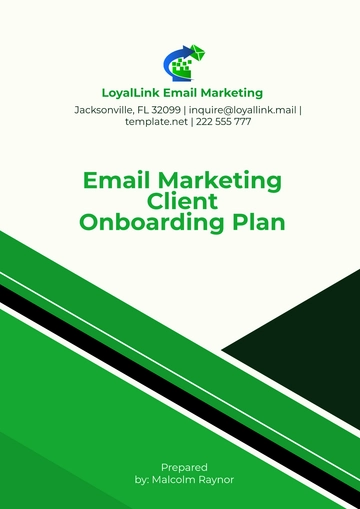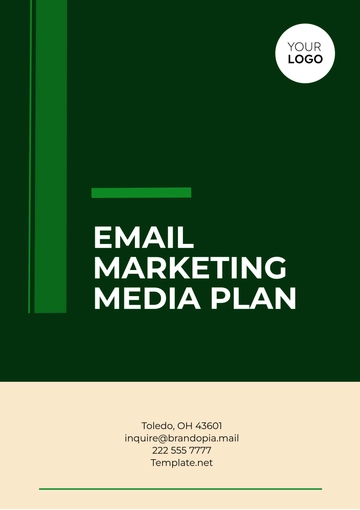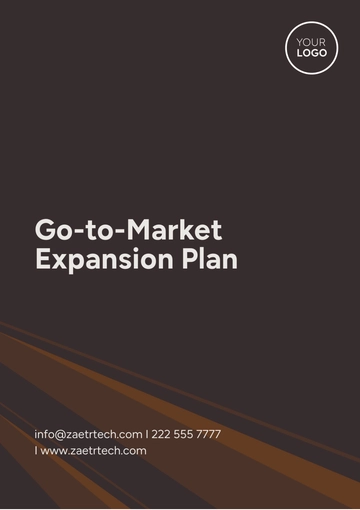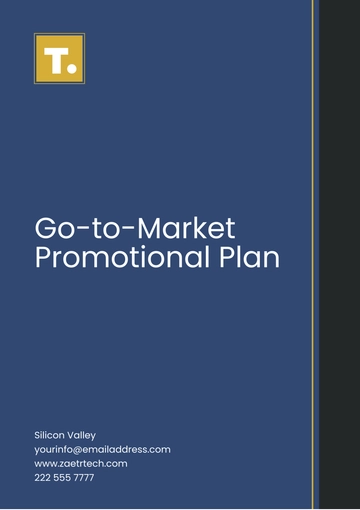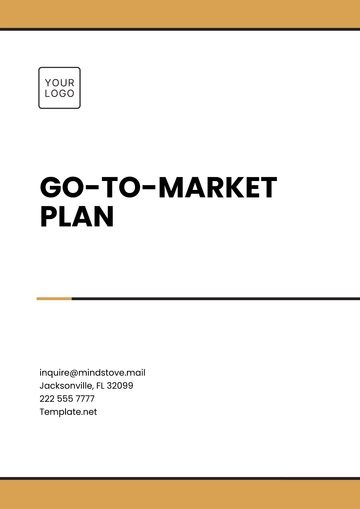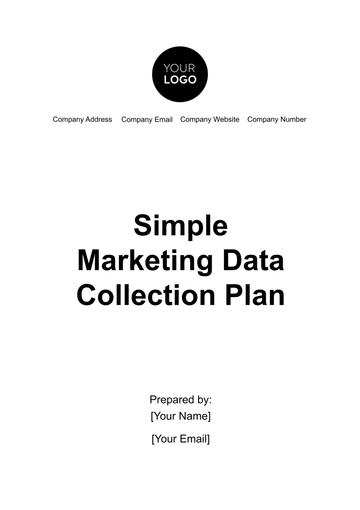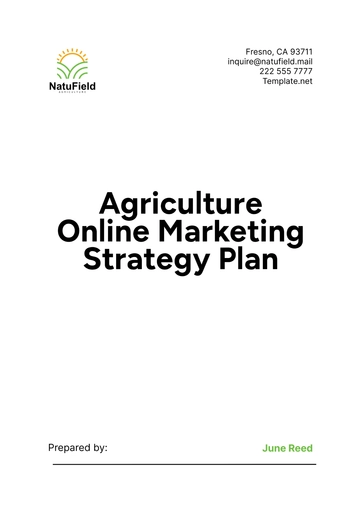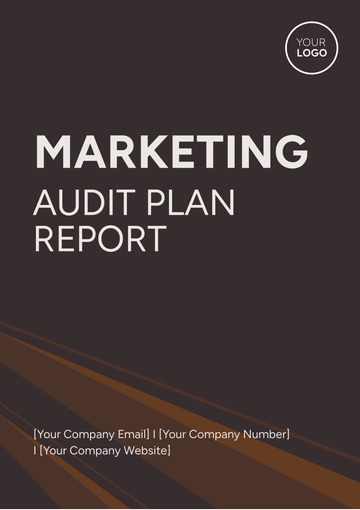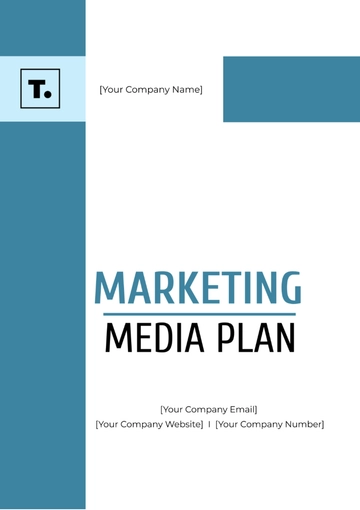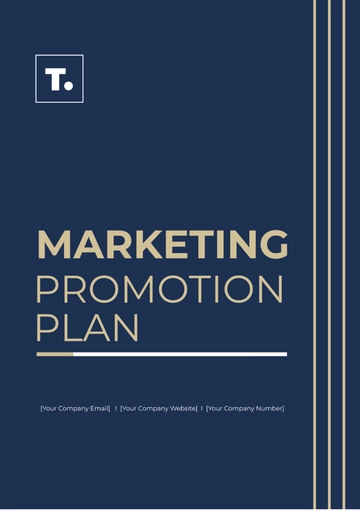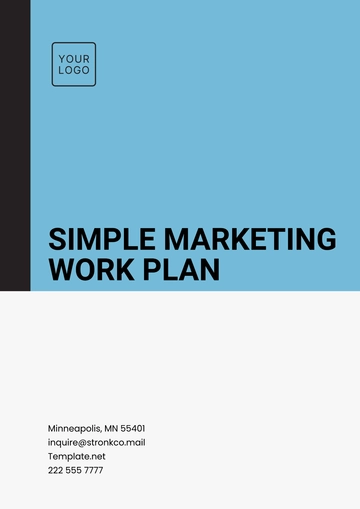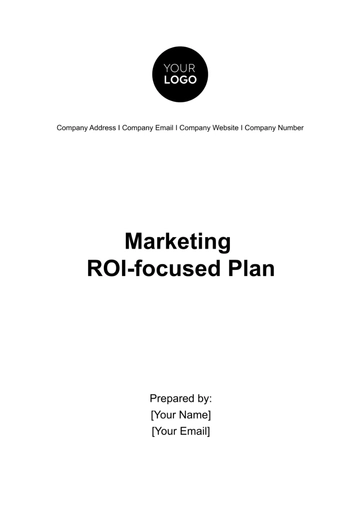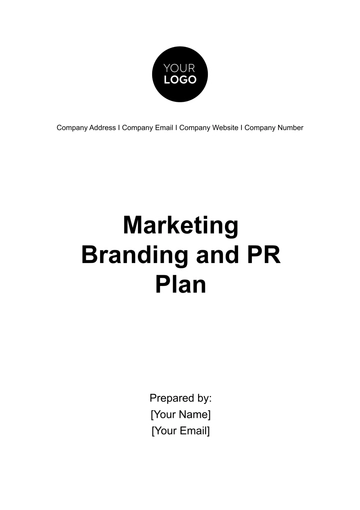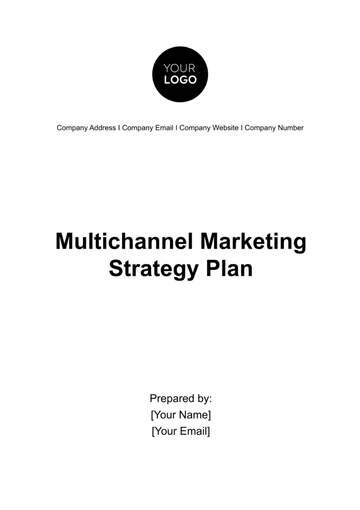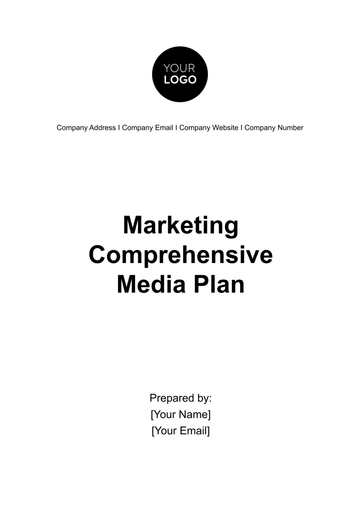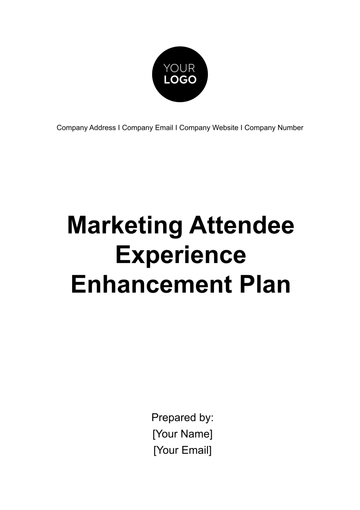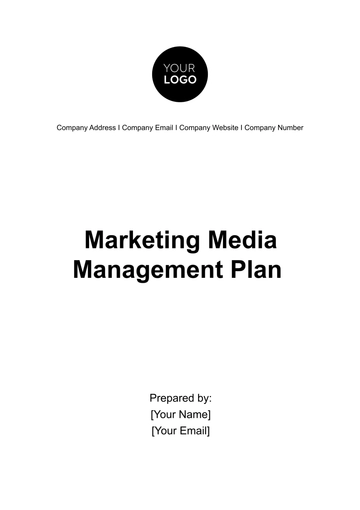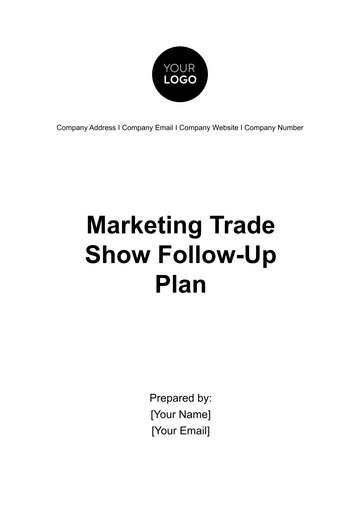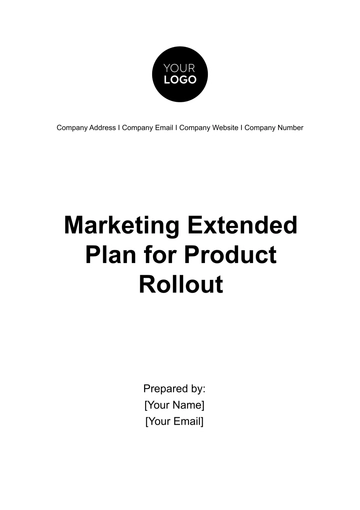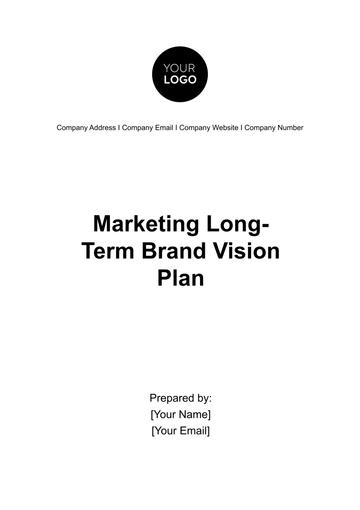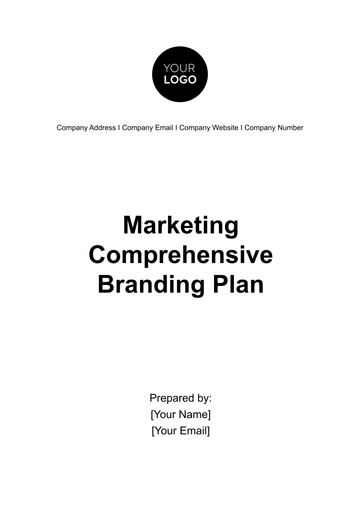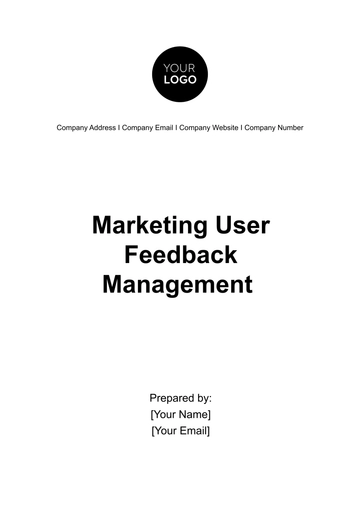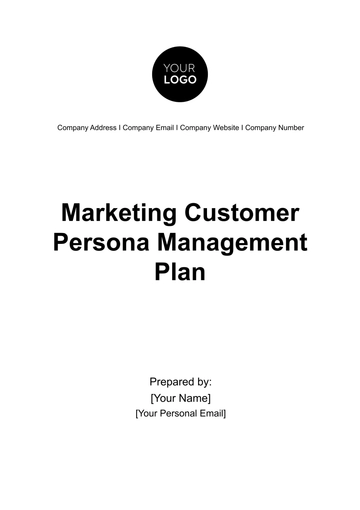Free Marketing Attendee Experience Enhancement Plan
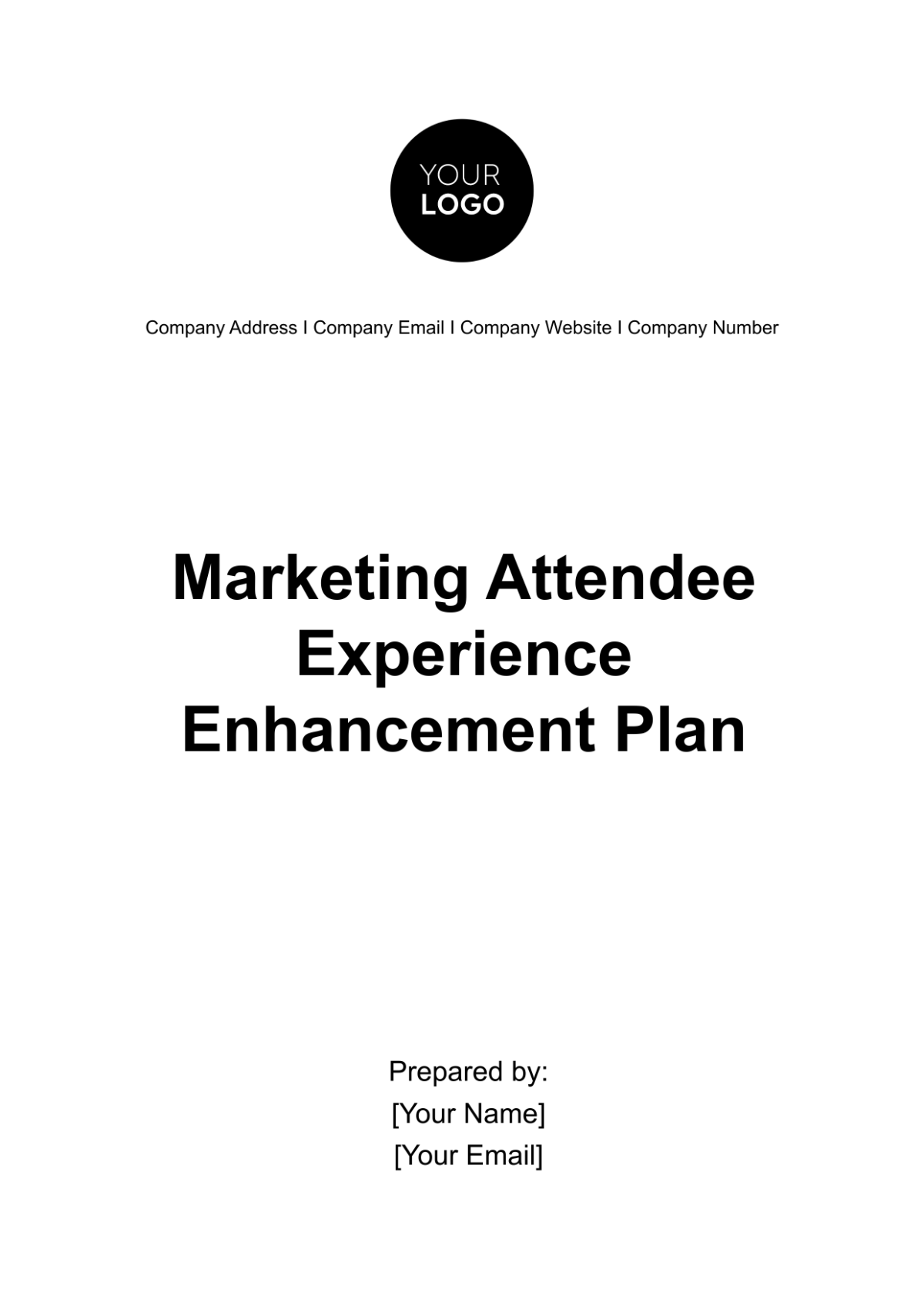
Executive Summary:
In the ever-evolving landscape of marketing and customer engagement, delivering exceptional attendee experiences has become a paramount objective for businesses. As [Your Company Name], a leader in eco-friendly products, we recognize the significance of enhancing attendee experiences during events, trade shows, and engagements.
This Marketing Attendee Experience Plan is a comprehensive strategy aimed at elevating the interaction between [Your Company Name] and its attendees. It encapsulates the essence of personalization, engagement, and seamless journey mapping. By analyzing the current landscape, identifying growth opportunities, and mitigating potential challenges, this plan sets a clear direction for our company's future expansion.
Introduction:
A. Background
[Your Company Name] has consistently been at the forefront of sustainability and eco-conscious products. We've garnered a dedicated and eco-conscious customer base over the years. As we continue to participate in industry events, trade shows, and marketing engagements, our goal is to not just showcase our products but to provide an unforgettable experience to our attendees.
B. Purpose of the Plan
The purpose of this plan is to outline strategies and initiatives that will enhance the attendee experience at events where [Your Company Name] participates. By optimizing personalization, engagement, and the overall attendee journey, we aim to foster lasting relationships, boost brand loyalty, and drive business growth.
Current Landscape: Analyzing the Current Experience
1. Personalization
Current Approach: Our current approach to personalization is limited to basic data collection, such as attendee names and contact information. While this information is essential, it merely scratches the surface of personalization possibilities.
Missed Opportunities: The consequence of this limited approach is that we miss valuable opportunities to tailor our interactions to attendees' unique preferences and needs. Attendees often receive generic content and product recommendations that may not resonate with their interests.
2. Engagement
Product Quality: It's noteworthy that the quality of our products is commendable and often draws praise from attendees. However, relying solely on product quality is no longer sufficient to make a lasting impact, especially in crowded event spaces where numerous exhibitors compete for attention.
3. Seamless Journey
Navigation Challenges: Attendees frequently encounter challenges in navigating our events seamlessly. From pre-event registration processes that can be cumbersome to post-event follow-up that sometimes lacks clear communication, there is room for improvement in providing a frictionless experience.
Growth Opportunities:
1. Personalization
Immersive Insights: There is immense potential in leveraging data analytics to gain deep insights into attendee behavior during events. By tracking which sessions they attend, which products they explore, and how they navigate the event space, we can build a comprehensive profile of each attendee.
Tailored Content: Armed with this data, we can personalize attendee experiences by delivering content that precisely aligns with their interests. For instance, if an attendee frequently attends sessions on eco-friendly home products, the event app can recommend similar sessions and product showcases.
Product Recommendations: Beyond content, we can also provide tailored product recommendations. If an attendee has shown interest in sustainable fashion, the app can suggest eco-friendly clothing brands and guide them to relevant booths.
2. Engagement
Future of Engagement: The future of event engagement lies in interactive and immersive experiences. Attendees are increasingly looking for memorable moments that go beyond passive viewing.
Augmented Reality (AR) and Virtual Reality (VR): Incorporating AR and VR elements into our events can captivate attendees like never before. They can use their smartphones or VR headsets to virtually experience our products in real-world scenarios. For instance, they can see how our solar-powered gadgets function in their homes or virtually explore the impact of our sustainability initiatives.
Contests and Educational Sessions: To encourage active participation, we can introduce interactive contests and educational sessions. Attendees can compete in sustainability-themed challenges or attend workshops on topics like eco-friendly gardening or energy-efficient home practices.
3. User-Friendly Event Apps
Intuitive Design: To address navigation challenges, we should invest in developing an intuitive event app. This app should be user-friendly, providing attendees with easy access to event schedules, booth locations, and contact information.
Personalized Schedules: The app should allow attendees to personalize their event schedules based on their interests. They can select sessions, workshops, and product showcases they wish to attend and receive reminders for each.
Networking Features: Incorporating networking features within the app can facilitate connections among attendees. Whether it's through chat functionality, virtual meet-ups, or discussion forums, this enhances the overall experience.
By capitalizing on these growth opportunities in personalization, engagement, and providing a seamless journey, we can transform our attendee experiences, leaving a profound and lasting impact on their perception of our brand and commitment to sustainability. These strategies align with our mission to not only promote our products but also inspire positive environmental change in every attendee we engage with.
Potential Challenges: Data Privacy and Security
As we collect attendee data to personalize their experiences, we must be diligent in ensuring data privacy and security compliance.
1. Technological Integration
Implementing advanced technology and interactive elements may pose challenges in terms of cost, infrastructure, and technical expertise.
2. Competing for Attention
In a crowded event landscape, standing out and capturing attendees' attention can be challenging.
Content Recommendations:
Utilize attendee registration data to provide personalized event schedules.
Offer customized product and session recommendations based on attendee interests.
Send personalized event reminders and updates to enhance engagement.
1. Interactive Technology Integration
Recommendation: Incorporate interactive technologies such as augmented reality (AR) and virtual reality (VR) to provide immersive experiences.
Benefits:
Create virtual product showcases and demos accessible from attendees' devices.
Host virtual tours of our sustainability initiatives and eco-friendly practices.
Offer AR-based scavenger hunts for attendees to explore our booth and win prizes.
Key Features:
Easy registration and ticketing within the app.
Interactive event maps with real-time booth information.
In-app messaging for direct communication with attendees.
Personalized schedules and session reminders.
Measuring Attendee Experience
Key Performance Indicators (KPIs)
Engagement Rate: Measure attendee engagement through interactions with our content, booth, and team.
Net Promoter Score (NPS): Collect attendee feedback post-event to gauge their likelihood of recommending us.
Conversion Rate: Track conversions, such as sign-ups for product demos or subscriptions to our newsletter, as a measure of attendee interest.
Post-Event Surveys:
Conducting post-event surveys to gather attendee feedback.
Survey Topics:
Overall event satisfaction.
Ease of navigation within the event.
Specific feedback on personalized content and interactive experiences.
Suggestions for improvement.
Challenges and Mitigations
1. Data Privacy Compliance
Collecting and utilizing attendee data must comply with data privacy regulations.
Mitigation:
Implement data encryption and secure storage practices.
Obtain explicit consent from attendees for data usage.
Appoint a data protection officer to oversee compliance.
2. Technical Challenges
Challenge: Integrating advanced technologies may face technical challenges.
Mitigation:
Collaborate with experienced technology partners for implementation.
Conduct thorough testing and simulations before the event.
Provide on-site technical support to troubleshoot issues.
Technology Investment: Allocate a significant portion of the budget to acquire and implement AR/VR technologies and event app development.
Marketing and Promotion: Dedicate resources to marketing and promotion efforts to attract a larger and more diverse attendee base.
Staff Training: Budget for training staff in utilizing new technologies and interacting with attendees effectively.
Recommended Strategies:
Personalization: Data-Driven Insights
Leveraging Behavioral Data: Implement data analytics tools to gather and analyze attendee behavior during events. This data includes which sessions they attend, which products they show interest in, and their navigation patterns within the event space.
Customized Content: Utilize the insights gained from data analysis to provide personalized content to each attendee. For example, if an attendee consistently shows interest in eco-friendly home products, the event app can recommend relevant sessions and product showcases.
Tailored Product Recommendations: Based on an attendee's previous interactions and preferences, the app can suggest eco-friendly products they might be interested in. This personalized approach increases the likelihood of conversions during and after the event.
Technology Integration:
Event App Features: Explore the integration of event apps with beacon technology. Beacons can transmit signals to attendees' devices, providing real-time, location-based information and recommendations.
Real-Time Updates: With beacon technology, attendees receive immediate updates about nearby product demonstrations, workshops, or special offers as they move through the event space. This enhances their experience and encourages them to explore more.
Interactive Maps: The event app can incorporate interactive maps that guide attendees to relevant booths and sessions based on their interests and real-time location within the venue.
Engagement: Interactive Elements
Augmented Reality (AR) Experiences: Introducing AR experiences allows attendees to interact with our products in a virtual space. For instance, attendees can use their smartphones or AR glasses to visualize how our eco-friendly furniture might look in their homes.
Virtual Reality (VR) Demonstrations: VR can immerse attendees in eco-friendly environments, showcasing the positive impact of our products. For example, they can virtually explore a sustainable forest or a plastic-free ocean while wearing VR headsets.
Educational Workshops: Organize interactive workshops that educate attendees about eco-friendly practices. These can include DIY recycling projects or sessions on sustainable gardening.
Content Diversity:
Workshop Sessions: Besides traditional product showcases, offer engaging workshop sessions where attendees can participate actively. For example, a hands-on workshop on upcycling or composting can be a unique and informative experience.
Live Product Demonstrations: Create an engaging atmosphere by conducting live product demonstrations with opportunities for attendees to ask questions and interact with our experts.
Guest Speakers: Invite industry experts or environmental activists to speak at our events. Their insights and passion can captivate the audience and inspire them to embrace a sustainable lifestyle.
Seamless Journey: User-Friendly Apps
Intuitive Design: When developing the event app, prioritize an intuitive and user-friendly design. Ensure that attendees can easily navigate through the app to find relevant information, such as event schedules, booth locations, and contact details.
Personalized Schedules: Allow attendees to personalize their event schedules within the app. They can choose sessions and workshops based on their interests and receive reminders before each session.
Networking Features: Incorporate networking features that enable attendees to connect with each other or with our team. This can include chat functionality, virtual meet-ups, or discussion forums.
Post-Event Follow-up:
Comprehensive Contact Lists: After the event, provide attendees with access to comprehensive contact lists of other attendees they interacted with. This fosters continued networking and collaboration opportunities.
Feedback Surveys: Implement post-event feedback surveys through the app to gather insights into attendee satisfaction and suggestions for improvement. Act on this feedback to continually enhance the attendee experience.
Follow-Up Content: Send follow-up content to attendees, such as event highlights, session recordings, or additional resources related to eco-friendly living. This keeps them engaged and informed beyond the event.
Conclusion:
The Marketing Attendee Experience Plan is a dynamic roadmap that aims to transform attendee interactions with [Your Company Name] into memorable, engaging, and personalized experiences. By focusing on personalization, interactivity, and ease of navigation, we will create an event environment that not only captivates attendees but also fosters lasting connections.
Through diligent monitoring and the adoption of technological advancements, we will mitigate challenges and consistently elevate our attendees experiences. This plan aligns with our vision of being an industry leader in delivering remarkable attendee interactions and contributing to the growth and sustainability of our brand.
For more information and to discuss the implementation of this plan, please contact:
[Your Name]
[Your Email]
- 100% Customizable, free editor
- Access 1 Million+ Templates, photo’s & graphics
- Download or share as a template
- Click and replace photos, graphics, text, backgrounds
- Resize, crop, AI write & more
- Access advanced editor
Transform your marketing events with the Marketing Attendee Experience Enhancement Plan Template, exclusively on Template.net. This editable and customizable resource ensures a personalized touch to every detail. Crafted for seamless implementation, it's easily modified using our Ai Editor Tool, guaranteeing an exceptional and tailored attendee experience. Elevate your events effortlessly!
You may also like
- Finance Plan
- Construction Plan
- Sales Plan
- Development Plan
- Career Plan
- Budget Plan
- HR Plan
- Education Plan
- Transition Plan
- Work Plan
- Training Plan
- Communication Plan
- Operation Plan
- Health And Safety Plan
- Strategy Plan
- Professional Development Plan
- Advertising Plan
- Risk Management Plan
- Restaurant Plan
- School Plan
- Nursing Home Patient Care Plan
- Nursing Care Plan
- Plan Event
- Startup Plan
- Social Media Plan
- Staffing Plan
- Annual Plan
- Content Plan
- Payment Plan
- Implementation Plan
- Hotel Plan
- Workout Plan
- Accounting Plan
- Campaign Plan
- Essay Plan
- 30 60 90 Day Plan
- Research Plan
- Recruitment Plan
- 90 Day Plan
- Quarterly Plan
- Emergency Plan
- 5 Year Plan
- Gym Plan
- Personal Plan
- IT and Software Plan
- Treatment Plan
- Real Estate Plan
- Law Firm Plan
- Healthcare Plan
- Improvement Plan
- Media Plan
- 5 Year Business Plan
- Learning Plan
- Marketing Campaign Plan
- Travel Agency Plan
- Cleaning Services Plan
- Interior Design Plan
- Performance Plan
- PR Plan
- Birth Plan
- Life Plan
- SEO Plan
- Disaster Recovery Plan
- Continuity Plan
- Launch Plan
- Legal Plan
- Behavior Plan
- Performance Improvement Plan
- Salon Plan
- Security Plan
- Security Management Plan
- Employee Development Plan
- Quality Plan
- Service Improvement Plan
- Growth Plan
- Incident Response Plan
- Basketball Plan
- Emergency Action Plan
- Product Launch Plan
- Spa Plan
- Employee Training Plan
- Data Analysis Plan
- Employee Action Plan
- Territory Plan
- Audit Plan
- Classroom Plan
- Activity Plan
- Parenting Plan
- Care Plan
- Project Execution Plan
- Exercise Plan
- Internship Plan
- Software Development Plan
- Continuous Improvement Plan
- Leave Plan
- 90 Day Sales Plan
- Advertising Agency Plan
- Employee Transition Plan
- Smart Action Plan
- Workplace Safety Plan
- Behavior Change Plan
- Contingency Plan
- Continuity of Operations Plan
- Health Plan
- Quality Control Plan
- Self Plan
- Sports Development Plan
- Change Management Plan
- Ecommerce Plan
- Personal Financial Plan
- Process Improvement Plan
- 30-60-90 Day Sales Plan
- Crisis Management Plan
- Engagement Plan
- Execution Plan
- Pandemic Plan
- Quality Assurance Plan
- Service Continuity Plan
- Agile Project Plan
- Fundraising Plan
- Job Transition Plan
- Asset Maintenance Plan
- Maintenance Plan
- Software Test Plan
- Staff Training and Development Plan
- 3 Year Plan
- Brand Activation Plan
- Release Plan
- Resource Plan
- Risk Mitigation Plan
- Teacher Plan
- 30 60 90 Day Plan for New Manager
- Food Safety Plan
- Food Truck Plan
- Hiring Plan
- Quality Management Plan
- Wellness Plan
- Behavior Intervention Plan
- Bonus Plan
- Investment Plan
- Maternity Leave Plan
- Pandemic Response Plan
- Succession Planning
- Coaching Plan
- Configuration Management Plan
- Remote Work Plan
- Self Care Plan
- Teaching Plan
- 100-Day Plan
- HACCP Plan
- Student Plan
- Sustainability Plan
- 30 60 90 Day Plan for Interview
- Access Plan
- Site Specific Safety Plan
